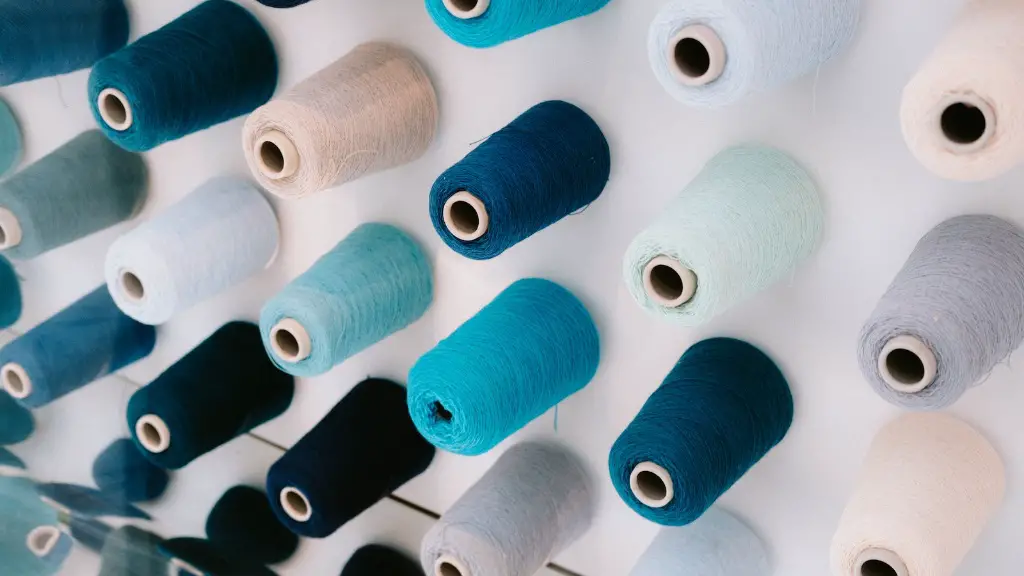Different Types of Threads
When it comes to selecting threads and fabrics for your next project, you may notice that there are several types of thread available. There are several sewing machine threads available to choose from, such as all-purpose cotton, cotton core, trilobal polyester, and more. On the other hand, you may also come across serger thread. So, you may be wondering, can you use serger thread on a sewing machine? The answer is yes – however, it’s important to understand the difference between the two types of thread and the implications of using them in your project.
Cotton thread is one of the most popular types of thread used in sewing machine projects. It is strong and relatively durable, making it an ideal choice for most garments and home décor items. It’s also the most affordable option when it comes to thread. Polyester thread is another popular choice for sewing machine projects, as it is strong and highly resistant to fading caused by washing or exposure to sunlight.
On the other hand, serger thread is a type of thread specifically designed for serger machines, or overlock machines. Although it can be used with a standard sewing machine, it should be used with caution as it is weaker and less durable than other types of thread. Serger thread is made of a stronger, more durable material that is better suited to serger machines that often use more powerful and aggressive stitch patterns, including the overlock stitch.
When it comes to deciding whether to use serger thread on a sewing machine, it’s important to consider the project that you are working on. If you need a strong, durable thread for a heavier fabric, such as denim, then the standard sewing machine thread is the best choice. On the other hand, if you are working on a lighter fabric, such as linen, or if you need a thread with a finer texture, then serger thread may be a better choice.
Benefits of Using Serger Thread
Although serger thread is weaker and less durable than other types of thread, this does not mean that it has no uses. In fact, it comes with several benefits. The first benefit is that serger thread is easier to use and finetune, as you can use the same spool of thread for the entire project. This can save both time and money, as you will not have to switch thread spools throughout the project.
Furthermore, serger thread comes in many different colors, so you can choose the perfect hue for your project. This is especially important in projects that require precision details, such as intricate garments or art pieces. Additionally, serger thread is much thinner than standard sewing machine thread, which can make it easier to sew with or hem small items.
Tips for Working with Serger Thread
Although it is possible to use serger thread on a sewing machine, there are several tips that you should keep in mind. First, you should be sure to use a smaller needle when working with serger thread. A smaller needle will ensure that the thread does not break as easily, as serger thread is much thinner than standard sewing machine thread.
Also, when starting or ending a seam, be sure to reinforce the stitches with a backstitch or a double stitch. This will make the seam stronger and less likely to come undone. Additionally, be sure to use a slightly higher tension setting when using serger thread. This will ensure that the thread is pulled tight enough to keep the seam strong and durable.
Different Methods of Finishing Seams
When it comes to finishing off a seam with a sewing machine, you may be more familiar with the zigzag stitch, which helps create a secure finish. However, there are several other methods that you can use with serger thread. One popular finishing method is the mock overlock stitch. This stitch is used to imitate the appearance of an overlock stitch, creating a seam that is durable and professional-looking.
To create a mock overlock stitch, begin by threading the bobbin with serger thread and the spool with regular sewing machine thread. To begin the stitch, set the sewing machine to a wide zigzag stitch and stitch forward, then backstitch and repeat. Adjust the width of the stitch to create the desired look. Finally, knot the threads to finish off the stitch.
Conclusion
In conclusion, serger thread can be used on a sewing machine, although there are several important tips to keep in mind. Serger thread is much thinner and less durable than standard sewing machine thread, so it should not be used on heavier fabrics. However, if you need a thread with a finer texture, then serger thread may be a better choice. Additionally, be sure to use a smaller needle and a higher tension setting when using serger thread. Finally, there are several methods that can be used to finish off a seam with serger thread, including the mock overlock stitch.

